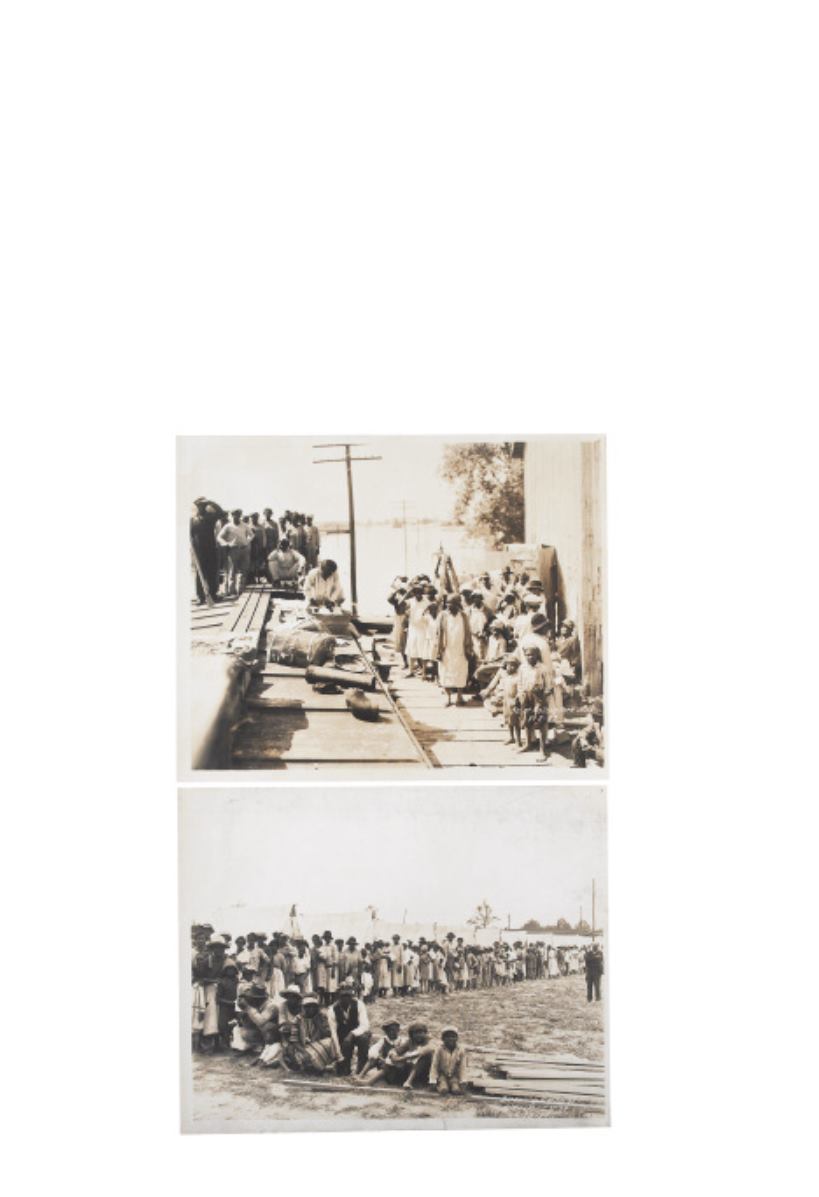
250
●
(CIVIL RIGHTS—MIGRATION.)
Refugees of the Great Flood of 1927 at
Cleveland and Rolling Fork Mississippi.
Two 8 x 10 silver print photographs, linen
backed.Mississippi, Late April, early May, 1927 * [together with] three original 8 x 10 press
photographs from the same flood; one showing a huge number of refugees waiting by a
steamboat, and the other showing farmers, fleeing in an old truck. The steamboat photo
has a small chip to the upper left corner, not affecting the image. Vp, 1927
[800/1,200]
In the late summer of 1926, heavy rains pummeled the central basin of the Mississippi. On
April 15, 1927, 15 inches of rain fell in an 18 hour period, dumping more than four feet of
water into the already saturated City of New Orleans. A group of bankers and businessmen
met and decided, in order to protect the wealthier sections of the city, they would set off 30 tons
of dynamite and blow the levees protecting the parishes of Plaquemines and St Bernard. This
all but destroyed the already impoverished black communities of the city. To add insult to
injury, city and state officials forced black men to build levees at gunpoint while people in their
own parishes starved. A black man was shot for refusing to unload a relief boat. Thousands of
displaced people spent months starving in tent camps, while whites received aid. This was the
essential “last straw.” Tens of thousands of blacks moved to the big cities of the North, espe-
cially Chicago, and over the next decades thousands more followed in the “Great Migration.”


